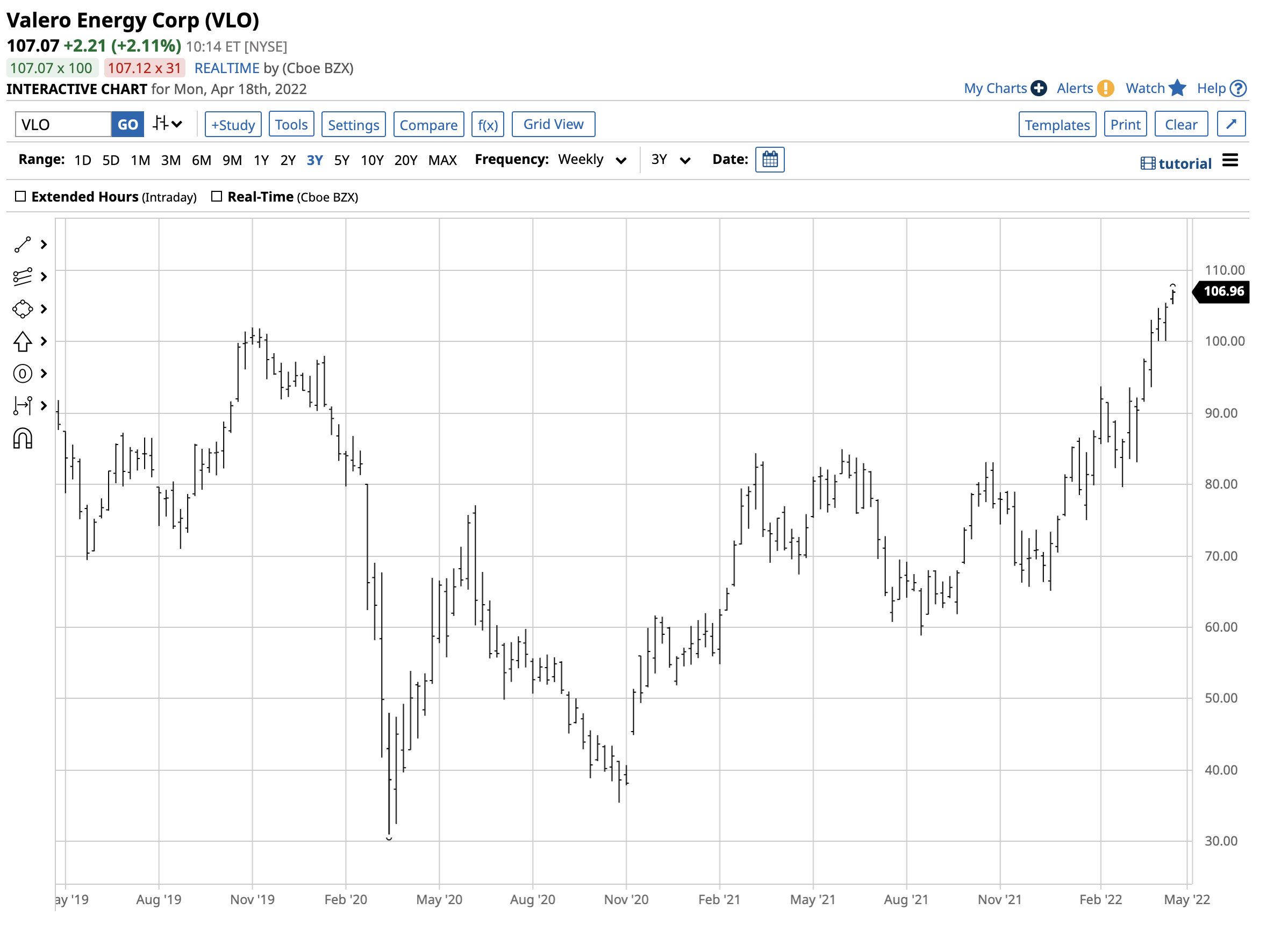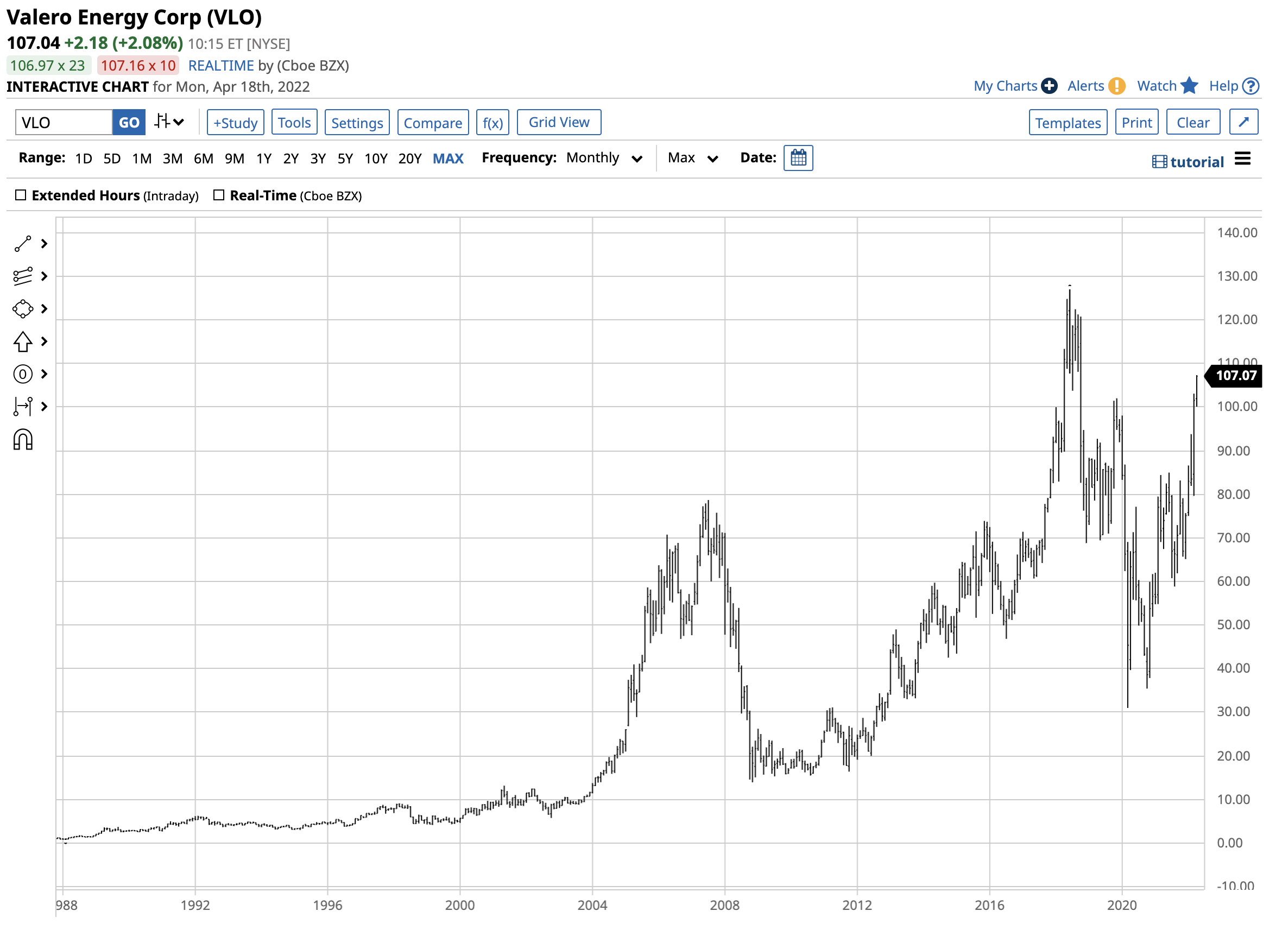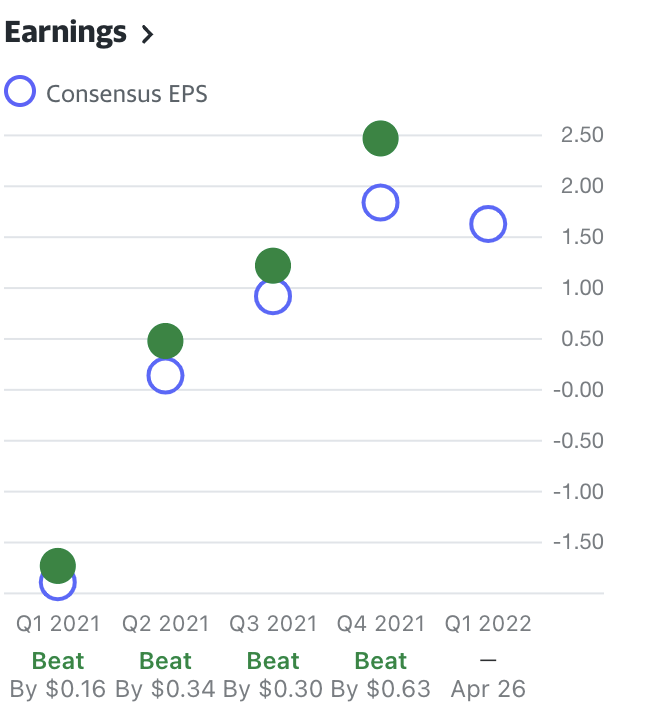This post was written exclusively for Investing.com
- Shares fell to $31 in March 2020
- Higher lows and higher highs over past two years
- VLO all-time high is $126.98
- Now could be a perfect time to take profit on VLO
- Risk-reward no longer favors the upside
In crude oil and oil product markets, crack spreads are the refining margin for processing a barrel of crude oil into gasoline or distillate products such as heating oil, diesel, and jet fuel.
Refiners do not take a risk on the prices of oil or oil products. They purchase petroleum at prior pricing if they can and sell the refined oil products at current market prices. The refineries invest millions or, in some cases, billions in plant, property, and equipment to process oil. Meanwhile, they bear the risk of the spreads between crude oil prices and the ultimate price of oil products—this difference is known as crack spreads.
Crude oil is processed in a catalytic cracker that heats the petroleum to temperatures that create gasoline and distillate fuels. While crack spreads are real-time indicators of the demand for oil products, they also serve as barometers for refinery profits.
In 2020, when the price of crude oil and oil products fell as the COVID pandemic gripped the energy complex, the distillate crack spread fell to $6.44 per barrel, the lowest price since 2010. Gasoline processing spreads dropped to negative $3.85 per barrel, the lowest level since 2008. At those prices, refining crude oil into distillate products was a losing proposition.
However, since the 2020 lows, refining spreads have made a massive comeback, resulting in profits flowing back into the refinery business. Valero Energy Corporation (NYSE:VLO), a leading US refining company, has benefited. Over the past two years, I've been very bullish on the prospects for VLO shares.
But in mid-April 2022, I've come to believe now is an excellent time to take profit on long VLO positions as the risk-reward no longer favors the upside.
Shares fell to $31 in March 2020
In early 2020, the global pandemic caused energy demand to evaporate as people worldwide sheltered inside their homes. Workplaces were shut down and travel ground to a halt. Nearby NYMEX WTI crude oil price dropped to negative $40.32 per barrel, the lowest price since futures trading began, as there was no storage capacity for the landlocked petroleum.
Nearby seaborne Brent crude oil futures dropped to $16 per barrel, the lowest level this century. Gasoline reached a low of 37.6 cents per gallon wholesale.
Refining companies involved in processing crude oil into distillates suffered. Valero shares reached a low of $31 in March 2020, the lowest price for the stock since December 2012. Five months earlier, in November 2019, VLO shares were over the $100 level.
Higher lows and higher highs over past two years
At the $31 level during March 2020, VLO turned out to be the bargain of the century. 
Source: Barchart
The chart shows the bullish pattern in VLO shares over the past two years that caused the stock to more than triple in value. On Apr. 18, VLO shares closed at $110.35.
VLO all-time high is $126.98
VLO shares moved above the first technical resistance level at the November 2019, $101.99 high.

Source: Barchart
The long-term chart shows the next upside target stands at the June 2018, $126.98 all-time high.
At the $110 level, VLO’s market cap was over $45.18 billion. An average of over 4.5 million shares change hands each day. As well, VLO pays shareholders a $3.92 dividend annually, translating to a yield of 3.55%.

Source: Yahoo Finance
Over the past four consecutive quarters, VLO consistently beat analyst consensus EPS forecasts. The San Antonio, Texas-based company will report Q1 2022 earnings on Tuesday, Apr. 26 before the open.
Current estimates are for EPS of $1.63 per share. A survey of fifteen analysts on Yahoo Finance has an average price target of $102.68 per share, with forecasts ranging from $87.16 to $135.
Now could be a perfect time to take profit on VLO
Readers who follow my articles on Investing.com know that I have been very bullish on VLO shares since 2020, when the stock was trading between $50-$60 per share. At over $100, it's hard to remain excited about the prospects for the refining company.
Three factors led me to take profit on VLO shares when the price moved past the $100 level:
- The long-term chart of VLO shows the stock has regularly experienced price explosions and implosions. While the price action remains very bullish, past volatility indicates that taking profits during explosive periods when the stock is above $100 per share has been optimal.
- Energy-related shares have skyrocketed over the past months. As of Apr. 14, the S&P 500 Index has moved 7.84% lower since Dec. 31, 2021. The Energy Select Sector SPDR® ETF (NYSE:XLE), which holds shares of the leading oil-related companies, is 43.87% higher since the end of last year. Over the same period, VLO shares have moved 39.6% higher. The returns on the oil sector have been incredible, but the risk of a correction increases along with the prices.
- Eventually, addressing climate change will return to center stage in both US and European policy. That's not bullish for the hydrocarbon industry. Moreover, an end to the war in Ukraine or an easing of tensions between Russia and the West could lead to a sudden and brutal downdraft in the oil market—significantly pressuring all related shares after their spectacular gains.
Bottom line: Valero has more than doubled in value since I began recommending the stock at the $50 per share level. I believe there is nothing wrong with pocketing the gains and taking profit on the stock when it sits at the over $100 per share level.
Risk-reward no longer favors the upside
Any trade or investment requires strict attention to risk versus reward dynamics. In VLO, at $50 per share, the potential for profits justified the downside risk. After holding the stock for two years, the dividend yield and reinvesting the quarterly dividends only enhanced the stock’s return.
As a rule, we are always long or short any risk position at the current market level, not at the original execution price.
At over $110 per share, I am neutral on the prospects for VLO over the coming months, and the risk of a sudden downdraft in the energy space has increased. As well, it's impossible to pick tops or bottoms in any asset as they tend to move to illogical, unreasonable, and irrational levels during bull and bear markets.
In early 2020, crude oil fell below zero and VLO dropped to $31 per share, making the risk-reward of a long position compelling. Now, with oil over $100 and VLO shares at the same level, the risk of holding on for higher prices is no longer justified.
